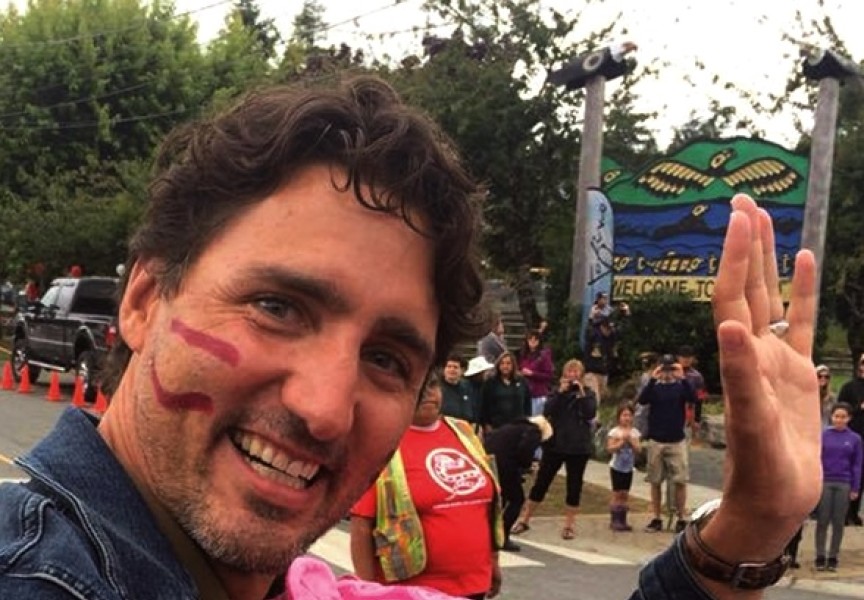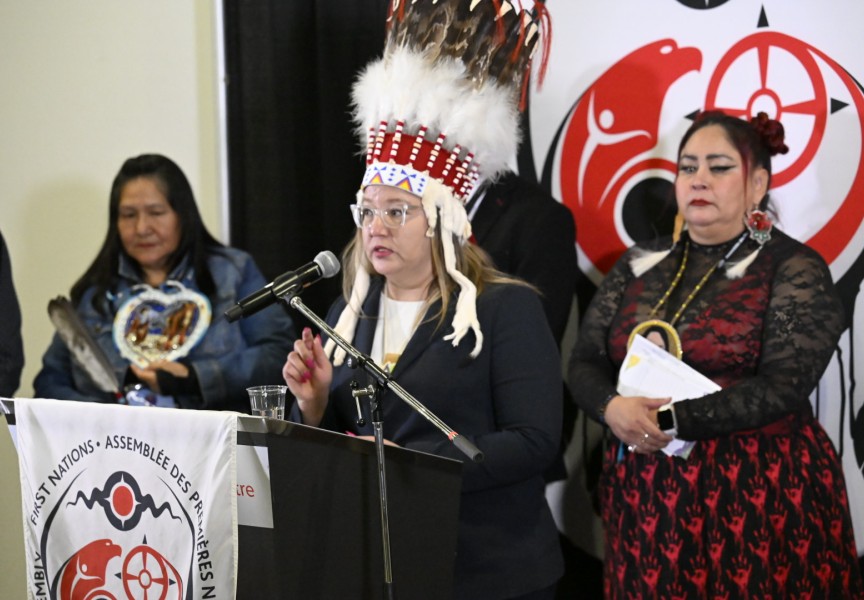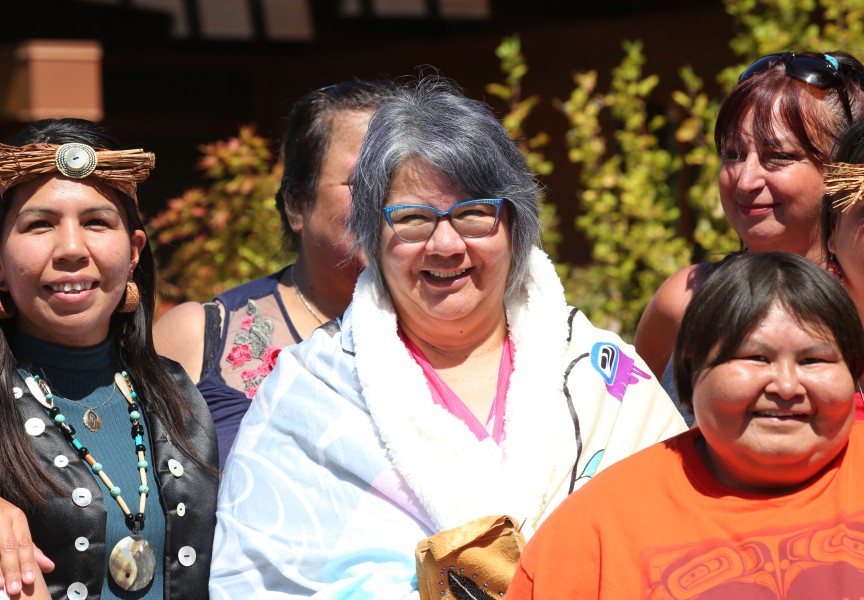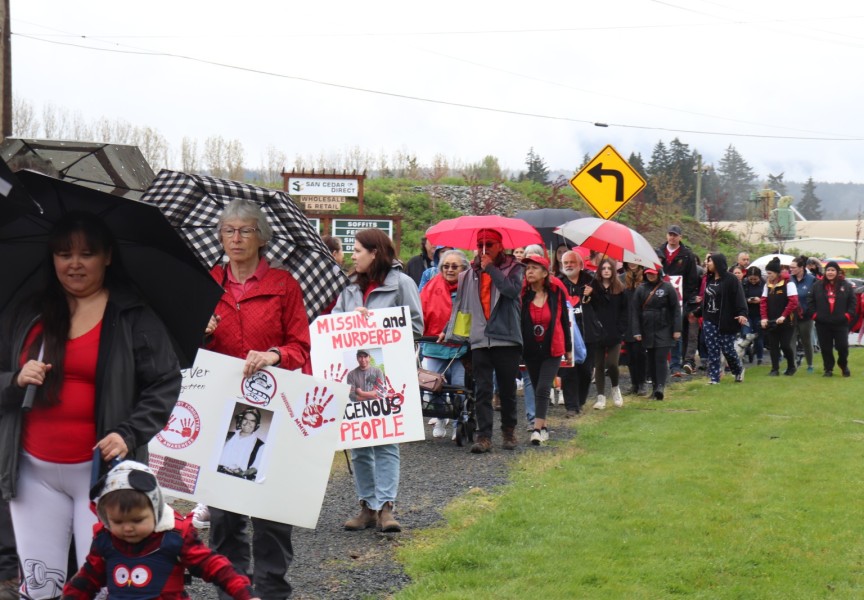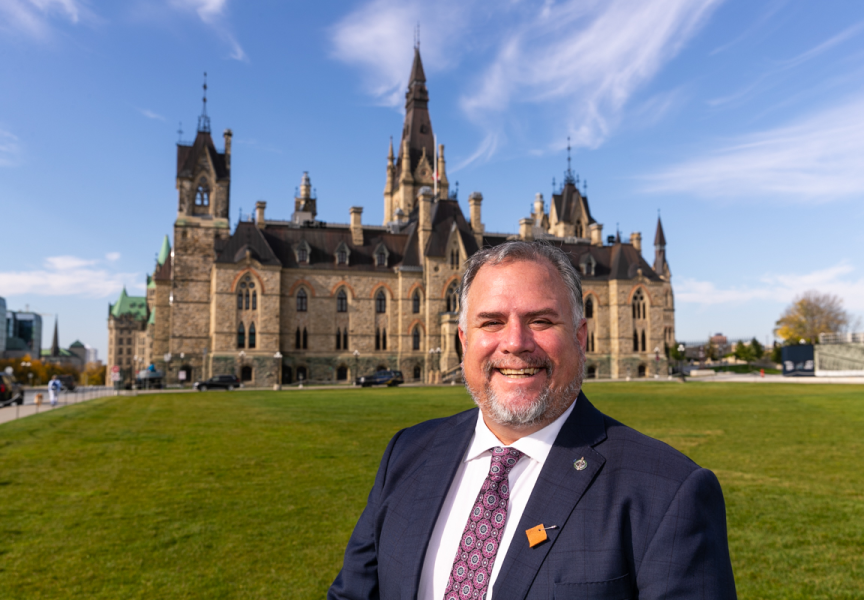While visiting the Alberni Valley Nov. 13, former Canadian Prime Minister Paul Martin blasted the Harper government for its handling of aboriginal education.
“The underfunding of First Nations education on reserve is a national disgrace,” he said. “It is absolutely unforgivable that anybody could say to a six-year-old going into Grade 1 that they are not going to be entitled to the same quality of education as another six-year-old going to school 10 kilometres away.” He estimated the funding gap for on-reserve education as upward of 50 per cent.
Martin was at Alberni District Secondary School when he made the comment to talk about the Aboriginal Youth Entrepreneurship Program (AYEP).
Part of the Martin Aboriginal Education Initiative (MAEI), AYEP is now offered in 44 schools nationwide.
ADSS is one of three B.C. schools with the program, which teaches Business Mathematics, Financial Literacy, Accounting, Marketing and Information/ Communications Technology, in order to prepare indigenous people for post-secondary studies and/or to run their own businesses.
Martin said the ADSS program “is going to inspire a lot of Canadians from coast to coast.”
Martin said AYEP was not created specifically to compensate for federal underfunding, but it can address some of the shortcomings.
Martin made his remarks at a press conference that included leaders from Hupacasath and Tseshaht First Nations, as well as Nuu-chah-nulth Tribal Council Education Manager of Education Services Dawna Johnson-Day.
Tseshaht Councillor Dennis Bill admitted he had only recently been introduced to AYEP, but said it fits well into his Nation's agenda.
“We are very interested in promoting entrepreneurship in our students. Tseshaht is always trying to move forward in the area of business and student success,” he said.
Hupacasath Chief Councillor Stephen Tatoosh said he recognized at least six of the Nuu-chah-nulth students in the current group of AYEP students, as well as a number of Coast Salish and members from other nations.
“It makes me proud, as a leader, to see such confidence in our people,” he said.
Johnson-Day joined NTC recently after serving as Regional Manager for the Ontario Ministry of Education and provincial lead for Aboriginal Education. On Thursday she noted that AYEP began as a pilot project under her watch in Thunder Bay in 2007, and she has followed its evolution into a nationwide program.
“Personally, I experienced watching the first graduates of the program walking across the stage at Dennis Franklin Cromartie [First Nation High School] a few years ago,” Johnson-Day said, adding her thanks to Martin and to Moira Jenkins, representing RBC, which is a major sponsor.
Martin said while the overriding goal of AYEP is to teach entrepreneurship, it is also intended to expose aboriginal students to the wide range of opportunities out there in “the real world,” while at the same time within a community context.
“Its magic lies in the support [the students] get from their communities, from their teachers and from school authorities. It also lies in showing that the indigenous worldview, from the beginning, has been one of expansion, growth and trade.”
Martin noted that the program is very much a work in progress. After launching AYEP in 2007, educators quickly realized there was a lack of education materials that actually focused on indigenous businesses in Canada. Two teachers were tasked with creating a set of textbooks. He held up a small stack of books that are now used across the country.
“They produced these books that say, 'You are not alone. The people who came before you have succeeded, and we are looking for you to move forward.'”
Martin said after speaking to some of the AYEP students at ADSS, he is confident that many have the skills and confidence to create their own businesses, whether it is selling their own artwork or, as one girl informed him, starting her own gym.
In question period, Martin acknowledged that he has spoken “at considerable length” on education with former Assembly of First Nations Chief A-in-chut Shawn Atleo, on panels across the country. Martin said Atleo encouraged him to visit Nuu-chah-nulth territory to see the future of aboriginal education.
“He said, 'You gotta go where I'm from.'”
Martin said the Kelowna Accord of 2005, which brought together the federal, provincial and territorial governments, plus five major indigenous organizations, was forged on the basis of equality. It recognized that education would be the key to improving the quality of life for Canada's First Nations, Metis and Inuit peoples.
Martin's Liberal government was architect of the Kelowna Accord, but the agreement was thrown out the window when Stephen Harper formed a minority Conservative government in 2006.
Martin was asked how he felt about AYEP's potential to train a new generation of business-savvy environmental warriors to oppose major developments in their traditional territories: did he see that as a healthy consequence or an acceptable risk?
In response, Martin said every First Nations child inherits a distinct worldview that includes a close connection to the environment. The goal of AYEP, he explained, is to provide the educational grounding for that child to make decisions consistent with their culture and community, whether it is for or against any particular business activity.
“Part of that education is to understand where the economy is going,” he said. “It's not up to us to determine what First Nations want. Our responsibility is to see that they have the same educational base [as the non-aboriginal community] within their own context.”
ADSS principal Rob Souther said 20 students have signed up for the program.
"It's a fairly new program. We did the first run last February, and what we are looking at now is what can we do to expand it?"
Souther said the program was mainly academic/project-based last year. This year, he hopes to get the AYEP students out of the classroom and into the "real world," working with community partners to gain hands-on experience in a range of business and commercial environments.
Diane Gallic is the Nuu-chah-nulth Education Worker at ADSS. Her mandate is to deliver cultural resources to the school, as well as to act as a liaison between the school and families. Gallic said the students are now in the preparation stage.
“They are very excited about it. They are now developing their business plans, and we go into the classroom beginning in February.”
Following the press conference, Martin took part in an assembly in the ADSS Auditorium.
The event began with a performance by students from Haahuupayak School. The first song was the Tseshaht Welcome Song. The audience learned that the late Tseshaht Tyee Ha'wilth Adam Shewish granted permission to the school to sing it in public. Next was the Victory Song by the late Dr. George Clutesi, which included a spirited dance performance. Haahuupayak instructor Trevor Little explained that it was an appropriate use of the song based on the intent of the AYEP program.
In his remarks, Martin asked one of the AYEP students to face the audience, drawn from the general ADSS population, in his We Stand Together T-shirt. The time has come to undo the legacy of European colonization and stand together as a united society, Martin said.
“We are not Europeans; we are not Asians; we are not Africans. We are North Americans. And so much of who we are is through sharing this land with people whose worldview and culture and traditions are so much deeper than we ever understood.”


